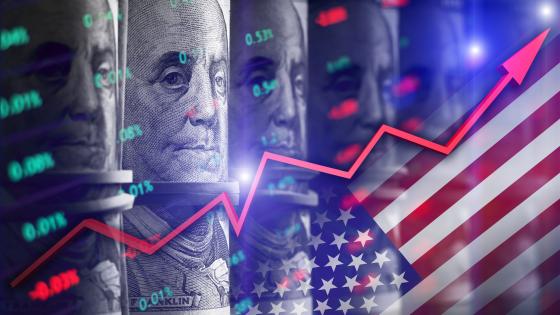The past three years have witnessed unprecedented changes in relative prices and marked increases in inflation in most countries. The relative price changes were triggered by two tail events: first, the Covid-19 pandemic and its aftermath, which caused a significant increase in the global demand for goods, along with global supply chain disruptions (di Giovanni et al. 2023); and second, the war in Ukraine, which led to an extraordinary step jump in the prices of energy and other commodities (e.g. Beck et al. 2022 for Germany), which has since largely reversed. While most countries saw a material surge in inflation, the economic impact of these relative price changes differed across economies.
Economists at central banks, academia, and markets have debated at length about the extent to which inflation in advanced economies would be transitory and whether inflation was mainly driven by supply or by demand forces. There seemed to be very little agreement, however, on the meaning of ‘transitory’ (a few months, a couple of years?), as argued by Krugman (2023), or on the desirable length of time over which central banks should return inflation to target following these extraordinary events. Given that supply forces played an important role as triggers of inflation, monetary policy has faced a difficult trade-off between reducing inflation and stabilising the output gap – a situation where the so called ‘divine coincidence’ does not hold. This has been particularly relevant for the euro area, which, as a net importer of energy, has faced a large negative terms of trade shock, and a consequent squeeze in real disposable incomes.
Both in the US and the euro area, the pandemic and the war hit different sectors and regions with variable intensity; in addition, different sectors and regions feature different degrees of wage and price rigidities. The combination of uneven shocks and price and wage rigidity, along with the structure of input-output linkages across sectors, led to a complex, staggered dynamic of sectoral inflation. This caused a drawn-out response of core inflation, rather than a one-off, sharp adjustment in core price levels.
Part of the current debate over elevated core inflation can be split into two broad interpretations. The first is that high core inflation is symptomatic of de-anchoring of inflation expectations and/or second-round effects involving profit and wage spirals. The second interpretation sees elevated core inflation as a reflection of relative-price and wage adjustments, needed for an efficient resource reallocation in response to a shock that hits different sectors with different intensity. This adjustment process would fully unwind just like the triggering shock, though in the presence of nominal rigidities and input-output linkages, it would take somewhat longer to wane than the underlying shock. While the lagged effects of the tightening in monetary policy already in motion should exert increasing downward pressure on inflation, the first interpretation of elevated core inflation would call for a relatively tighter stance of monetary policy, to act against de-anchoring. In contrast, in the second case, tightening should be limited, as the relative price adjustment is necessary to achieve allocative efficiency and the inflation it generates would dissipate on its own with the end (or reversal) of the underlying inflationary shock.
There are costs and risks associated with each of these different strategies. The costs of over-tightening are an unnecessarily negative impact on economic activity, along with inefficiencies from relative price distortions, and the likely undershooting of the inflation target further in the future. The adverse effects on economic activity are likely to be more consequential in the euro area, since private consumption and investment are still materially below their 2019 trends. On the other end of the argument, the risks of de-anchoring and wage-price spirals stemming from a persistent period of inflation above target must be carefully weighed to avert a repetition of the inflationary experience from the 1970s.
To contribute to the debate, the main focus of the 26th Geneva Report on the World Economy (Guerrieri et al. 2023) is on the dynamics of sectoral inflation adjustment in response to different types of shocks in the euro area and the US. The report presents empirical evidence pointing to a high degree of heterogeneity in sectoral inflation in response to energy shocks both in the euro area and in the US. The euro area has typically experienced higher persistence of core inflation in response to energy shocks than the US, as shown by the impulse responses to an oil shock reported Figure 1.
Figure 1 Core inflation response to a positive oil shock: Euro area versus the US
Note: The parameters and the instruments are estimated on monthly data over the sample 1997:01:01-2022:30:09. The chart reports response to an oil supply shock which increases the WTI price by 1 dollar. Shaded areas are 68, 80 and 90 percent coverage ratios.
The analysis also underscores a lower degree of inflation heterogeneity across sectors in response to a standard demand shock (proxied by a monetary policy shock) rather than an energy shock.
These features are captured in a stylised two-sector New-Keynesian model with nominal rigidities, where energy directly affects the production of one sector, say manufacturing, while it affects the other, say services, only through the use of intermediate goods. This implies that in response to an energy shock, inflation in the energy-intensive sector responds relatively quickly, while inflation in the other sector is weaker early on, but then builds up and produces a second wave of sectoral inflation. Given the uneven structure of the economy, an aggregate demand shock would also generate some heterogeneity in sectoral inflation, but in much smaller scale than an energy shock that is also uneven in nature. The model can also explain the more persistent inflation response to an energy shock in the euro area relative to the US. This is because the model generates an inflation response that is initially smaller but more persistent in the presence of a higher degree of nominal rigidities, a more likely feature of the euro area. To capture the different patterns of terms of trade between the euro area and the US, we also explore an open economy version of the model and show that an economy that is more dependent on foreign energy, like the euro area, experiences a larger drop in consumption, consistent with the slower recovery of households' consumption in the euro area relative to the US in the recent period.
The model shows how underlying nominal rigidities prevent sectoral relative prices from adjusting in response to an energy shock, generating less reallocation of production across sectors than in a setting with flexible prices. This implies that when an economy with nominal rigidities is hit by an uneven shock, it may be necessary to tolerate somewhat higher inflation to facilitate the relative-price adjustment and the efficient allocation of resources across sectors. This calls for a more accommodative monetary policy stance relative to a setting in which the same level of inflation is generated by an even demand shock with no need of reallocation. The benefits of temporarily higher inflation to allow for relative price adjustments need to be balanced against the potential risks of de-anchoring inflation expectations. While the risk of de-anchoring expectations is outside of the model, we turn to it in the empirical analysis.
As a first step to gauge de-anchoring risks, the report studies the evidence on inflation expectations during the inflation increases and subsequent tightening of the late 1970s and early 1980s, and compares them with the recent period. Arguably, the stability of long-term inflation expectations we have observed in the recent past is a credibility bonus that central banks can exploit to communicate the rationale for taking a bit longer to return inflation to target, as relative prices adjust and activity recovers. The analysis also points to a larger effect on expectations (downward) in the 2008 crisis than during the recent inflation episode.
The evidence indicates that the features of the recent inflation and disinflation episode can be mainly explained by the transmission mechanism in the goods market, rather than by second-round effects in the labour market (Bernanke and Blanchard 2023). While in the US the latter effects may still materialise given the high degree of tightness in the labour market, this is less likely in the euro area, given weaker economic conditions (explained by the different impact of the energy shock) and the less supportive fiscal policy. The weakness in activity and less supportive fiscal stance in the euro area, along with the lags of monetary policy transmission, all advocate for more patience.
The report also analyses the market view of the equilibrium level of interest rates consistent with price stability, r*. The consensus view amongst market economists suggests a low r*, which implies a tight stance of monetary policy at present and a return of a low interest rate regime in five years from now. The econometric evidence on the US, on the other hand, is less conclusive on this point.
References
Beck, G, K Carstensen, J-O Menz, R Schnorrenberger and E Wieland (2022), “Real-time food price inflation in Germany in light of the Russian invasion of Ukraine”, voxEU.org, 24 June.
Bernanke, B and O Blanchard (2023), "What caused the US pandemic-era inflation?", Hutchins Center Working Paper.
di Giovanni, J, S Kalemli-Özcan, A Silva and M A Yıldırım (2023), “Supply chains, trade, and inflation”, VoxEU.org, 7 January.
Guerrieri, V, M Marcussen, L Reichlin, and S Tenreyro (2023), The Art and Science of Patience: Relative Prices and Inflation, 26th Geneva Report on the World Economy, ICMB and CEPR.
Känzig, D (2021), “The macroeconomic effects of oil supply news: Evidence from OPEC announcements”, American Economic Review 111 (4): 1092-1125.
Krugman, P (2023), “Wonking Out: In Economics, a Game of Teams,” New York Times, 14 July.








